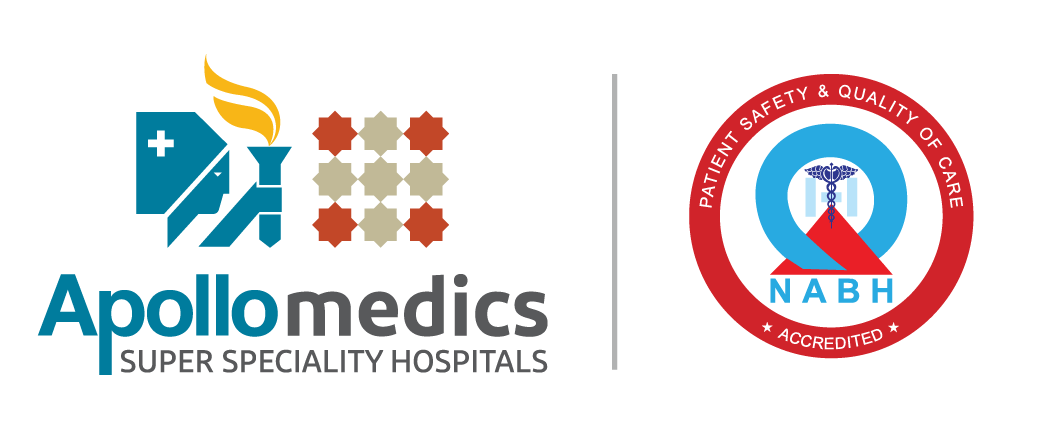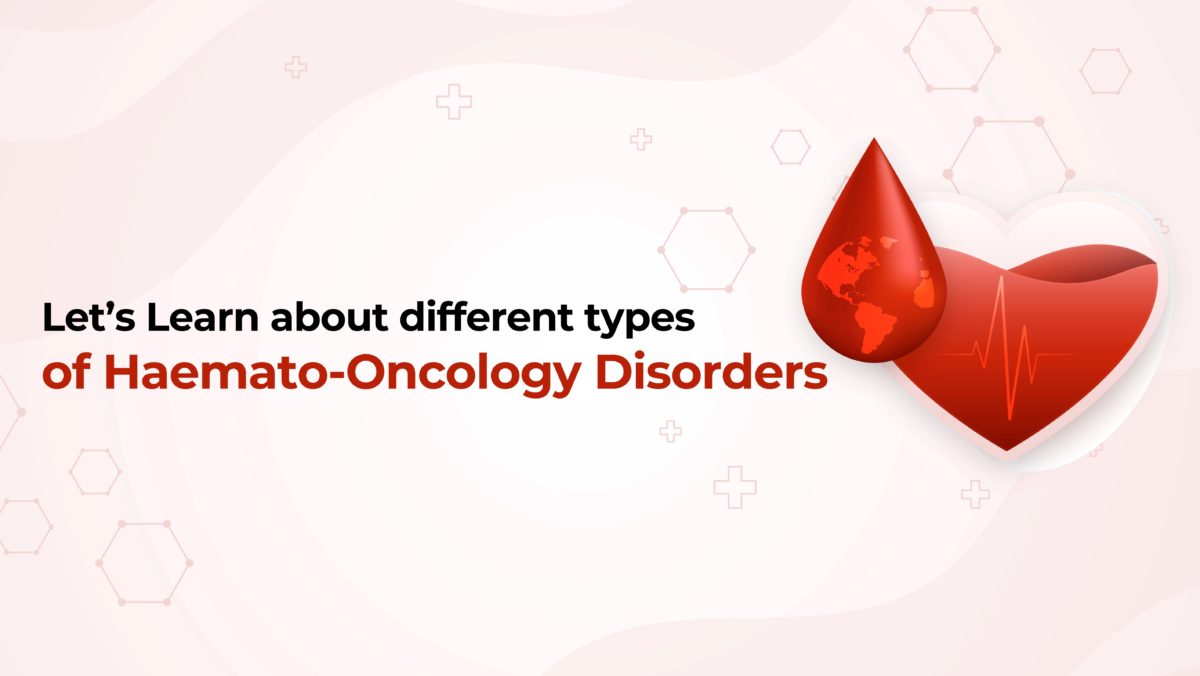Hematologic oncology integrates the study of cancer and the study of blood, two different medical specialities. Blood malignancies and conditions connected to the blood are treated, diagnosed, and prevented by hematologic oncologists. The hematologic oncologists at the Apollo Cancer Centre in Lucknow offer cutting-edge medical therapy to patients with malignant hematologic disorders such leukemia, multiple myeloma, non-Hodgkin lymphoma, Hodgkin lymphoma, and more, which are covered in more detail below:
Aplastic Anemia:-
Aplastic anemia is a condition that occurs when your body stops producing enough new blood cells. The condition leaves you fatigued and more prone to infections and uncontrolled bleeding. A rare and serious condition, aplastic anemia can develop at any age. It can occur suddenly, or it can come on slowly and worsen over time. It can be mild or severe. n aplastic anemia, stem cells are damaged. As a result, the bone marrow is either empty (aplastic) or contains few blood cells (hypoplastic). The most common cause of aplastic anemia is from your immune system attacking the stem cells in your bone marrow. Treatment for aplastic anemia might include medications, blood transfusions or a stem cell transplant, also known as a bone marrow transplant.
Thalassemia: –
Thalassemia is an inherited blood disorder that causes your body to have less hemoglobin than normal. Hemoglobin enables red blood cells to carry oxygen. Thalassemia can cause anemia, leaving you fatigued. If you have mild thalassemia, you might not need treatment. But more severe forms might require regular blood transfusions. Some babies show signs and symptoms of thalassemia at birth; others develop them during the first two years of life. Some people who have only one affected hemoglobin gene don’t have thalassemia symptoms.
Thalassemia is caused by mutations in the DNA of cells that make haemoglobin. Haemoglobin molecules are made of chains called alpha and beta chains that can be affected by mutations. In thalassemia, the production of either the alpha or beta chains is reduced, resulting in either alpha-thalassemia or beta-thalassemia. Mild forms of thalassemia trait don’t need treatment. For moderate to severe thalassemia, treatments might include: Frequent blood transfusions, Chelation therapy, and Stem cell transplant.
Sickle Cell Anemia-
Sickle cell anemia is one of a group of inherited disorders known as sickle cell disease. It affects the shape of red blood cells, which carry oxygen to all parts of the body.Red blood cells are usually round and flexible, so they move easily through blood vessels. In sickle cell anemia, some red blood cells are shaped like sickles or crescent moons. These sickle cells also become rigid and sticky, which can slow or block blood flow.There’s no cure for most people with sickle cell anemia. Treatments can relieve pain and help prevent complications associated with the disease.
Stem cell transplant – Also known as bone marrow transplant, this procedure involves replacing bone marrow affected by sickle cell anemia with healthy bone marrow from a donor. The procedure usually uses a matched donor, such as a sibling, who doesn’t have sickle cell anemia.
Inherited Bone Marrow failure Syndrome:-
The inherited bone marrow failure syndromes (IBMFS) are a group of rare genetic blood disorders in which there is usually some form of aplastic anemia (failure of the bone marrow to produce blood), associated with a family history of the same disorder. Some of these conditions have typical changes in physical appearance or in laboratory findings which suggest a specific diagnosis. The major disorders are: Amegakaryocytic thrombocytopenia (Amega), Diamond Blackfan anemia (DBA), Dyskeratosis congenital (DC), and Fanconi anemia (FA). Hematopoietic stem cell transplantation is the preferred therapy for most inherited bone marrow failure syndromes.
Hemophilia:-
Hemophilia is a rare disorder in which the blood doesn’t clot in a typical way because it doesn’t have enough blood-clotting proteins (clotting factors). If you have hemophilia, you might bleed for a longer time after an injury than you would if your blood clots properly. Hemophilia is usually inherited, meaning a person is born with the disorder (congenital).
Congenital hemophilia is classified by the type of clotting factor that’s low. The most common type is hemophilia A, associated with a low level of factor 8 The next most common type is hemophilia B, associated with a low level of factor 9. Treatment includes regular replacement of the specific clotting factor that is reduced. Newer therapies that don’t contain clotting factors also are being used.
https://lucknow.apollohospitals.com/hemato-cancer.html
Iron Deficiency Anemia:-
It is a common type of anemia – a condition in which blood lacks adequate healthy red blood cells. Red blood cells carry oxygen to the body’s tissues. As the name implies, iron deficiency anemia is due to insufficient iron. Without enough iron, your body can’t produce enough of a substance in red blood cells that enables them to carry oxygen (hemoglobin). As a result, iron deficiency anemia may leave you tired and short of breath. Iron deficiency anemia signs and symptoms may include: Extreme fatigue, Weakness, Pale skin, Chest pain, fast heart beat or shortness of breath, Headache, dizziness or lightheadedness. To treat iron deficiency anemia, your doctor may recommend that you take iron supplements. Your doctor will also treat the underlying cause of your iron deficiency, if necessary.
Idiopathic Thrombocytopenic Purpura (ITP):-
Idiopathic thrombocytopenic purpura is a blood disorder characterized by an abnormal decrease in the number of platelets in the blood. Platelets are cells in the blood that help stop bleeding. A decrease in platelets can result in easy bruising, bleeding gums and internal bleeding. Idiopathic thrombocytopenic purpura (ITP) may occur when the immune system mistakenly attacks platelets. In children, it may follow a viral infection. In adults, it may be chronic. In children, ITP usually resolves without any treatment. Adults commonly need treatment with medication for bleeding. Rarely the spleen may need to be removed.
Autoimmune Hemolytic Anemia:-
Autoimmune hemolytic anemia (AIHA) is a rare immune disorder. It happens when your body mistakes red blood cells as foreign substances and attacks them. Treatments include medication, surgery or, in rare cases, a blood transfusion. AIHA is highly manageable, but can be fatal if left untreated. Prompt care is critical.
If your AIHA develops without the obvious presence of an underlying condition, it’s called primary AIHA. Secondary AIHA is when it’s linked to another condition, such as a viral illness, other autoimmune diseases, medication or underlying blood cancer (such as lymphoma). Autoimmune hemolytic anemia treatment usually involves addressing underlying conditions first. For example, if your AIHA is linked to lupus, then your healthcare provider will probably start by treating the lupus directly. If AIHA is caused by lymphoma, treating the lymphoma directly is important. If AIHA is associated with a certain drug, you’ll likely stop taking that medication.
Myelodysplastic Syndrome/ Myeloproliferative Diseases :-
Myelodysplastic/myeloproliferative diseases are a group of diseases of the blood and bone marrow in which the bone marrow makes too many white blood cells. These diseases have features of both myelodysplastic syndromes and myeloproliferative disorders. In myelodysplastic diseases, the blood stem cells do not mature into healthy red blood cells, white blood cells, or platelets and as a result, there are fewer of these healthy cells.
In myeloproliferative diseases, a greater than normal number of blood stem cells develop into one or more types of blood cells and the total number of blood cells slowly increases. The 3 main types of Myelodysplastic/myeloproliferative diseases include chronic myelomonocytic leukemia (CMML); juvenile myelomonocytic leukemia (JMML); and atypical chronic myelogenous leukemia (aCML).
Polycythemia Vera:-
It is a type of blood cancer. It causes your bone marrow to make too many red blood cells. These excess cells thicken your blood, slowing its flow, which may cause serious problems, such as blood clots. Polycythemia vera is rare. It usually develops slowly, and you might have it for years without knowing. Often the condition is found during a blood test done for another reason. Without treatment, polycythemia vera can be life-threatening. But proper medical care can help ease signs, symptoms and complications of this disease.
Acute Lukemias (ALL/AML) :-
Leukemia is a cancer of the body’s blood-forming tissues, including the bone marrow and the lymphatic system. Many types of leukemia exist. Some forms of leukemia are more common in children. Other forms of leukemia occur mostly in adults.
Leukemia usually involves white blood cells. Your white blood cells are potent infection fighters — they normally grow and divide in an orderly way, as your body needs them. But in people with leukemia, the bone marrow produces an excessive amount of abnormal white blood cells, which don’t function properly. Treatment for leukemia can be complex — depending on the type of leukemia and other factors. But there are strategies and resources that can help make your treatment successful.
Chronic Myelogenous Leukemia (CML) :-
Chronic myelogenous leukemia (CML) is an uncommon type of cancer of the bone marrow — the spongy tissue inside bones where blood cells are made. CML causes an increased number of white blood cells in the blood. The term “chronic” in chronic myelogenous leukemia indicates that this cancer tends to progress more slowly than acute forms of leukemia.
The term “myelogenous” in chronic myelogenous leukemia refers to the type of cells affected by this cancer. Chronic myelogenous leukemia can also be called chronic myeloid leukemia and chronic granulocytic leukemia. It typically affects older adults and rarely occurs in children, though it can occur at any age. Advances in treatment have contributed to a greatly improved prognosis for people with chronic myelogenous leukemia. Most people will achieve remission and live for many years after diagnosis.
Hodgkin’s Lymphoma : –
Hodgkin’s lymphoma is a type of cancer that affects the lymphatic system, which is part of the body’s germ-fighting immune system. In Hodgkin’s lymphoma, white blood cells called lymphocytes grow out of control, causing swollen lymph nodes and growths throughout the body.
Hodgkin’s lymphoma, which used to be called Hodgkin’s disease, is one of two general categories of lymphoma. The other is non-Hodgkin’s lymphoma. Advances in diagnosis and treatment of Hodgkin’s lymphoma have helped give people with this disease the chance for a full recovery. The prognosis continues to improve for people with Hodgkin’s lymphoma.
Non-Hodgkin’s Lymphoma:-
Non-Hodgkin’s lymphoma is a type of cancer that begins in your lymphatic system, which is part of the body’s germ-fighting immune system. In non-Hodgkin’s lymphoma, white blood cells called lymphocytes grow abnormally and can form growths (tumors) throughout the body. Non-Hodgkin’s lymphoma is a general category of lymphoma.
There are many subtypes that fall in this category. Diffuse large B-cell lymphoma and follicular lymphoma are among the most common subtypes. The other general category of lymphoma is Hodgkin’s lymphoma.Advances in diagnosis and treatment of non-Hodgkin’s lymphoma have helped improve the prognosis for people with this disease.Solid Tumors in Children: –
Solid Tumors in Children:-
Solid tumor is a term used to describe many forms of cancer that can happen throughout the body. Some types of cancerous (malignant) tumors tend to occur in young children, and others occur in adolescents and young adults. Different tumor types tend to occur in particular body locations, leading to characteristic signs and symptoms, such as bone pain in children with bone tumors, or swelling in the abdomen in children with Wilms tumor or neuroblastoma.
Some children may be very ill, and some children may not have any symptoms at all. Solid tumors make up about 30% of all pediatric cancers. The most common types of solid tumors in children include brain tumors, neuroblastoma, rhabdomyosarcoma, Wilms’ tumor, and osteosarcoma.
The Bottom Line:-
The Apollomedics Institute of Haematology& Bone Marrow Transplant is open 24×7 round the clock and offers trauma and emergency services in addition to having the best haemato oncologist in Lucknow to treat any issue. Our best haemato-oncologists for paediatrics & adults in Lucknow provide you with the best and most cutting-edge procedures, including bone marrow transplants, all under one roof.
-Cutting-edge technological apparatus
-24/7 Trauma & Emergency
-Suite for chemotherapy
-Hematopathology Blood Bank Uni



